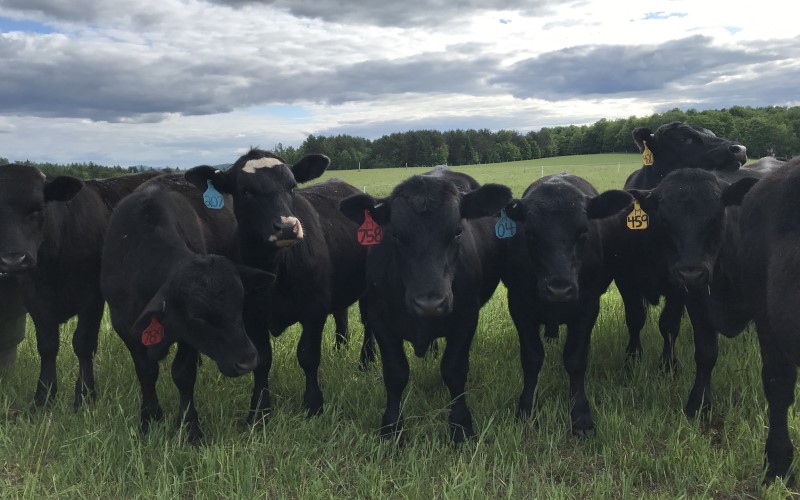Understanding Animals Threat Defense (LRP) Insurance: A Comprehensive Guide
Browsing the world of livestock danger security (LRP) insurance can be an intricate endeavor for numerous in the farming market. This type of insurance policy provides a safeguard against market changes and unexpected circumstances that might influence livestock manufacturers. By understanding the ins and outs of LRP insurance, producers can make enlightened decisions that might safeguard their procedures from monetary threats. From how LRP insurance coverage operates to the various protection alternatives available, there is much to uncover in this extensive overview that might possibly form the way animals manufacturers approach risk administration in their organizations.

Exactly How LRP Insurance Coverage Works
Periodically, recognizing the technicians of Animals Threat Security (LRP) insurance policy can be intricate, yet damaging down exactly how it works can provide quality for ranchers and farmers. LRP insurance policy is a danger monitoring device designed to shield livestock manufacturers against unanticipated cost declines. The plan enables producers to set a protection degree based on their specific requirements, choosing the number of head, weight array, and protection rate. When the plan is in area, if market value drop below the protection rate, producers can sue for the difference. It is necessary to note that LRP insurance policy is not a revenue assurance; rather, it focuses exclusively on rate risk security. The insurance coverage period typically ranges from 13 to 52 weeks, providing versatility for manufacturers to choose a duration that lines up with their manufacturing cycle. By making use of LRP insurance, ranchers and farmers can alleviate the financial threats connected with changing market value, ensuring greater security in their operations.
Qualification and Coverage Options

When it comes to coverage alternatives, LRP insurance policy supplies manufacturers the adaptability to pick the insurance coverage degree, protection period, and endorsements that finest match their threat management requirements. By recognizing the qualification standards and coverage choices offered, livestock producers can make informed choices to handle danger efficiently.
Benefits And Drawbacks of LRP Insurance
When evaluating Animals Danger Security (LRP) insurance coverage, it is important for livestock producers to consider the benefits and downsides fundamental in this risk monitoring tool.

One of the main benefits of LRP insurance is its ability to supply security versus a decrease read in animals prices. Furthermore, LRP insurance coverage supplies a level of versatility, allowing manufacturers to personalize protection levels and policy periods to suit their particular demands.
Nevertheless, there are additionally some drawbacks to take into consideration. One limitation of LRP insurance coverage is that it does not shield against all kinds of risks, such as illness episodes or all-natural catastrophes. Moreover, costs can often be expensive, especially for manufacturers with big livestock herds. It is essential for producers to carefully evaluate their private threat exposure and monetary scenario to determine if LRP insurance policy is the ideal threat administration device for their procedure.
Recognizing LRP Insurance Policy Premiums

Tips for Making Best Use Of LRP Conveniences
Optimizing the benefits of Livestock Risk Defense (LRP) insurance coverage requires critical preparation and positive threat administration - Bagley Risk Management. To maximize your LRP insurance coverage, consider the adhering to pointers:
Routinely Examine Market Problems: Remain educated concerning market fads and cost variations in the livestock market. By checking these variables, you can make enlightened choices about when to purchase LRP insurance coverage to secure versus potential losses.
Set Realistic Coverage Degrees: When picking insurance coverage degrees, consider your production costs, market price of livestock, and possible threats - Bagley Risk Management. Setting realistic insurance coverage levels makes certain that you are click here to read appropriately shielded without overpaying for unnecessary insurance coverage
Diversify Your Protection: As opposed to depending solely on LRP insurance, think about diversifying your threat administration strategies. Incorporating LRP with various other danger administration devices such as futures agreements or options can offer comprehensive coverage versus market unpredictabilities.
Testimonial and Adjust Protection Routinely: As market problems change, occasionally evaluate your LRP insurance coverage to ensure it straightens with your present threat exposure. Adjusting insurance coverage degrees and timing of acquisitions can assist enhance your threat defense technique. By following these pointers, you can maximize the advantages of LRP insurance and safeguard your livestock procedure versus unanticipated dangers.
Verdict
In final thought, livestock danger security (LRP) insurance is an important device for farmers to manage the economic threats connected with their livestock procedures. By comprehending how LRP works, qualification and insurance coverage options, in addition to the pros and cons of this insurance policy, farmers can make enlightened choices to shield their livelihoods. By thoroughly thinking about LRP costs and executing techniques to take full advantage of advantages, farmers can alleviate prospective losses and ensure the sustainability of their procedures.
Animals producers interested in acquiring Animals Risk Protection (LRP) insurance can check out a variety of eligibility requirements and protection options tailored to their particular animals operations.When it comes to insurance coverage options, LRP insurance policy offers manufacturers the versatility to select the coverage level, coverage period, and endorsements that best match their risk management demands.To comprehend the intricacies of Animals Risk Security (LRP) insurance coverage totally, understanding the variables influencing LRP insurance premiums is essential. LRP insurance policy premiums are identified by numerous elements, consisting of the coverage level picked, the expected price of animals at the end of the protection duration, the type of livestock being guaranteed, and the length of the coverage period.Review and Readjust Coverage Frequently: As market problems visit this website transform, periodically evaluate your LRP coverage to ensure it lines up with your existing danger exposure.